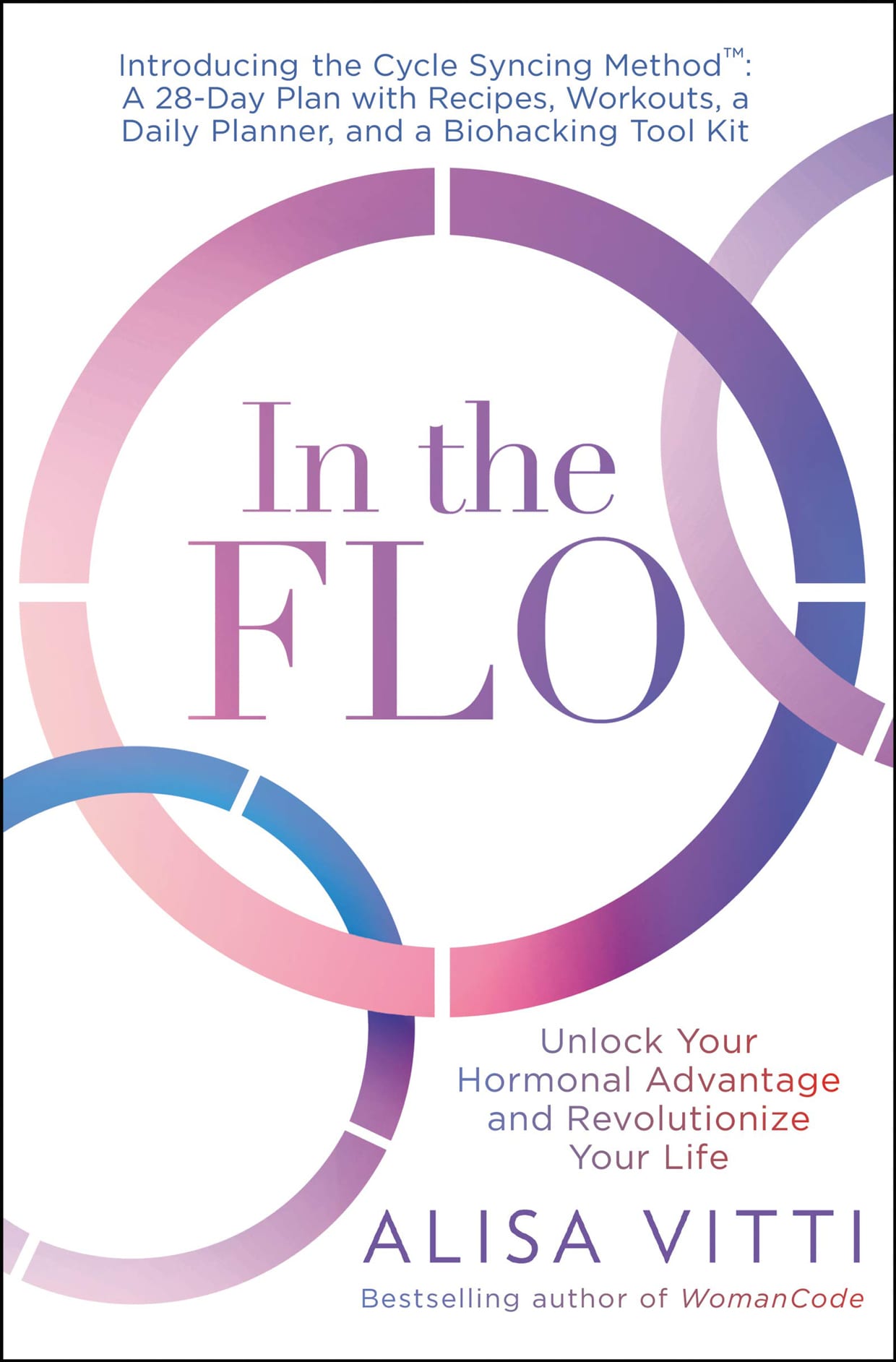At times, the pandemic feels very similar to being forced onto a roller coaster by your adventurous friends who promise the ride “is not that scary!” There are constant ups and downs and the entire time you are praying for the end, as it cannot come soon enough. According to the American Psychological Association the average reported stress level for U.S. adults related to the Coronavirus pandemic is 5.9.
However, women, in particular, are being hit even harder right now thanks to all of this daily stress and anxiety — breakouts, irregular periods, hormonal imbalance. We talked to Alisa Vitti, the founder of FLOliving (a modern hormone healthcare company) and author of WomanCode and In The FLO. A leader in female biohacking, Vitti has both the reason and the solution for our current situation. “Women are constantly coming to the center online asking, ‘Oh, my gosh, you know, I took a pregnancy test, and I’m not pregnant. But where’s my period?’ Yeah, well, it’s stressed out.”
Keep reading for her tips on how to make it through these tense times without stressing your body out.
Chronic Stress is Bad for You
Cortisol rises in the body when you are put in very stressful situations or when you read about stressful things. During the pandemic, the ground is constantly shifting. Will things open? Will we go back to work? Will we go back to school? What’s happening? The lack of certainty. When we look at Maslow’s hierarchy of needs, certainty is one of the big ones. Without that certainty, you then just have this additional level of chronic low-grade stress happening constantly in your body. Which is not what your body is designed to do with your stress response system.
What is it? Say, a big dog jumps out of the bushes which leads you to get scared. Cortisol is secreted by the adrenal glands to speak to your fat cells. The fat cells then take the cortisol, unlock the stored glucose and shoots it into the bloodstream so that you can hightail it away from the big scary dog. That is one of the main things that your stress response system is for. It is not designed for this ongoing stress. What it means is now your adrenal glands have to produce that cortisol constantly and that is a problem because it will run out of micronutrients to do that. When that happens, it steals from this other hormone called pregnenolone. Pregnenolone breaks down into cortisol but also, more importantly, into progesterone.
The Impact on Your Cycle
If you have chronic stress, the adrenals can no longer make all the cortisol your body is requesting on a constant basis. It will steal from pregnenolone and in order to make more cortisol — the body will deprioritize. It will say, “The priority here is cortisol, so we’re not going to allocate as much for progesterone production right now.” That’s okay for one day but if it is every day for a month, you can quickly imagine what is going to happen the week before your period. You are going to have that horrible ratio of too much estrogen and not enough progesterone. You are going to have that first month of chronic stress, which is what happened to women back in April — a lot of women had really bad PMS.
You will have irritability, mood swings, depression, anxiety, migraines, insomnia, fatigue, brain fog, acne.
Signs to Look Out For
The first sign that this is happening to you is that your PMS gets worse. You will have irritability, mood swings, depression, anxiety, migraines, insomnia, fatigue, brain fog, acne.
Then the second month, if nothing changes and you are still stealing from pregnenolone you can actually stop ovulating, you can stop making all of your sex hormones, DHEA, estrogen, progesterone, testosterone, which will impair your reproductive functions.
Month three could be a missing period, low libido and weight fluctuations. It can quickly spiral.
Start to Use a Period Tracker
Your period is your fifth vital sign. Just like you want to monitor your temperature, amount of steps, or sleep, you want to monitor your cycle. Since the cycle is happening to you every single day, you want to be checking in every single day.
You want to track because you have to know, for example, are you having a breakout around ovulation? Why? It means is that you have excess estrogen and your liver is not working as well. To break that down, it is resulting in skin eruption. It also will tell you what types of food you can start eating that very day to start helping the liver, so you do not have to wait for things to become worse. The app educates you in real-time as you are tracking all the symptoms that we have listed for you to choose from each and every day, so that you are learning in real-time and applying the right approach to help your body count your act, whatever is off balance.
If you are having a little break out during ovulation, chances are good your PMS is going to be bad, too. Estrogen equals exacerbated PMS symptoms. You would also want to be tracking all the way through PMS. How many symptoms? What is your symptom load? How many of them do you have? How bad are they? And then you want to start to really work on changing diet, exercise and lifestyle to help the body do its job.
Moderate Your Fitness Routine
You have to limit your exercise to 30 minutes to flush cortisol. Why? Well, after 30 minutes of exercise, you have burned through whatever glucose is in your bloodstream from whatever meal you have eaten most recently, and then you go into adrenal reserve. The adrenals then send out cortisol to talk to your fat cells to burn glucose. Which you would think would be good because you want to lose weight if that is something you are trying to do, but when you have this chronic stress situation and a pregnenolone steal, that is only going to make your period problems worse.
You also have to do the right exercises at the right time in your cycle, because during the first half of the cycle, you have lower resting cortisol, and in the second half of the cycle you have higher resting cortisol rates.
I made a chart in chapter five of my new book “In the Flow” that tells you which exercises are appropriate to do at which phase of your cycle so that you don’t exacerbate the cortisol situation.
Orgasms also help to flush cortisol – the part before climax and most women skip over that.

Add the Right Supplements
When we are stressed and when we are producing all of this cortisol and adrenaline, the liver specifically has to package all of these hormones and get them out of your system to keep you healthy. When we are under stress, we flush a lot of our water-soluble micronutrients, like B vitamins and magnesium out of our system more quickly. If your micronutrient levels were a bank account, you would be behind where you want to be.
Here is what you need:
- Magnesium helps your hormone cycle as a whole. It eases bloating and encourages good sleep. It helps with alleviating anxiety and it is involved in 300 catalytic reactions in the body. You have to have it. If you drink a cup of coffee, you flush out your magnesium, and you need to replace it.
- A good comprehensive B complex. Specifically, B5 is good for your adrenals and B12 is great for energy and stress management.
- In order for your body to make progesterone, you need vitamin D6.
- An omega 3 fatty acid and vitamin D3 to promote hormone balance. Vitamin D, though we call it a vitamin, actually acts as a master hormone in the body, and healthy levels of vitamin D keep the entire hormone system stable and balanced. 93 percent of infertility is caused by vitamin D3 deficiency.
- Vitamin C and alpha-lipoic acid are important for the liver to break down extra excess estrogen and probiotics also help the gut microbiome metabolize that excess estrogen and keep your PMS at bay.
Please consult with your family practitioner before trying any supplements.
We only recommend products we have independently researched, tested, and loved. If you purchase a product found through our links, Sunday Edit may earn an affiliate commission.








